Glassnode Spotlights: Ethereum's Evolving Ecosystem - Staking, DeFi, and Derivative Markets
The third part of our Glassnode Spotlights series, presenting the most interesting and actionable insights from the Coinbase x Glassnode Q2 Guide to Crypto Markets, explores Ethereum's Evolving Ecosystem - Staking, DeFi, and Derivative Markets.
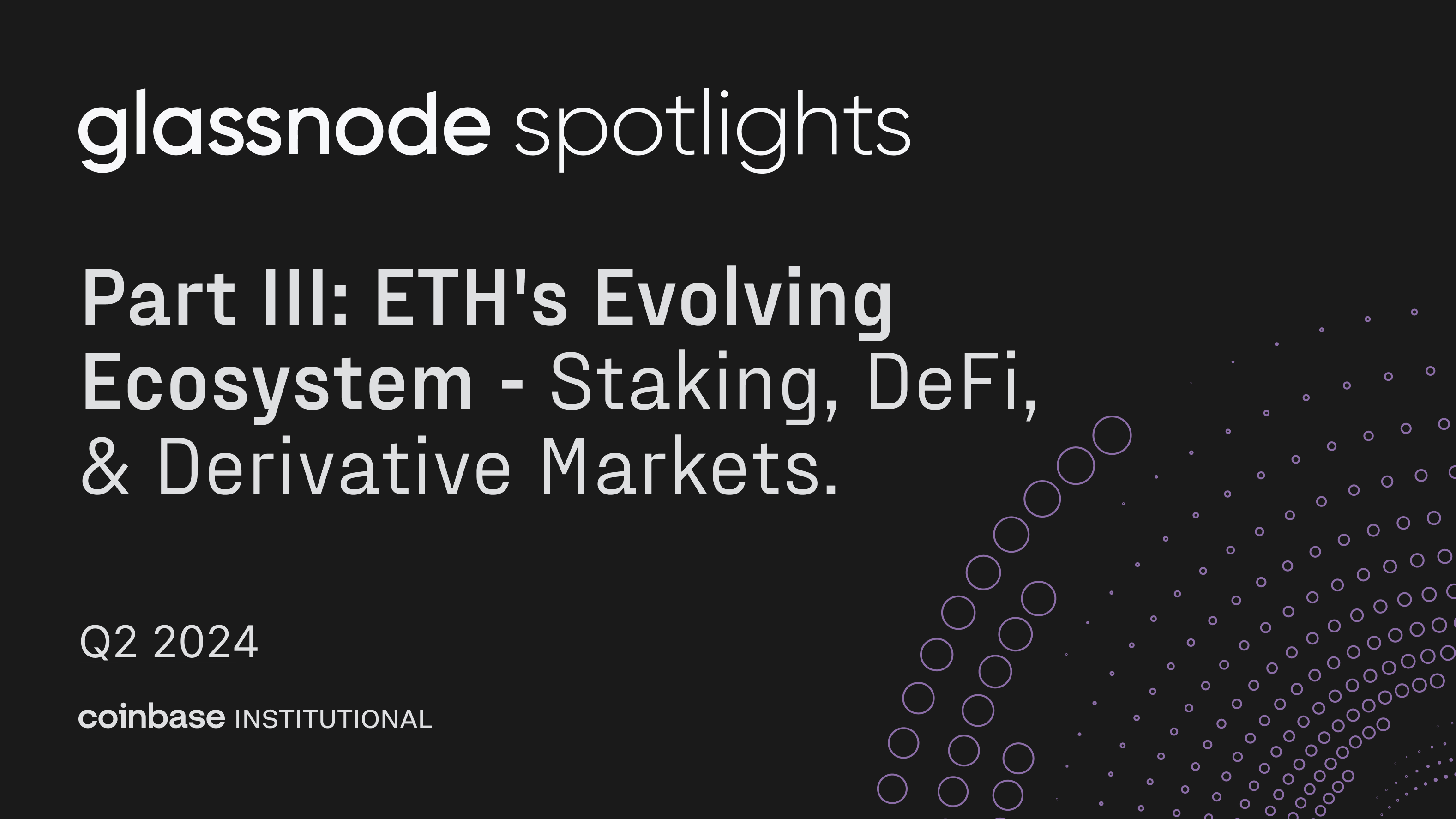
Introduction
In this spotlight article, the third in our Glassnode Spotlights series on the Coinbase x Glassnode Q2 report, we are turning our attention to the Ethereum landscape. The first quarter of 2024 has been critical for Ethereum, marked by major developments that are transforming how it operates. The Dencun upgrade enhanced Ethereum's scalability and lowered transaction costs. Meanwhile, Ethereum's price hit $4K, a level not seen in two years. This period also saw a notable increase in Ethereum staking. In this piece, we will examine these changes and discuss their wider effects on the Ethereum network.
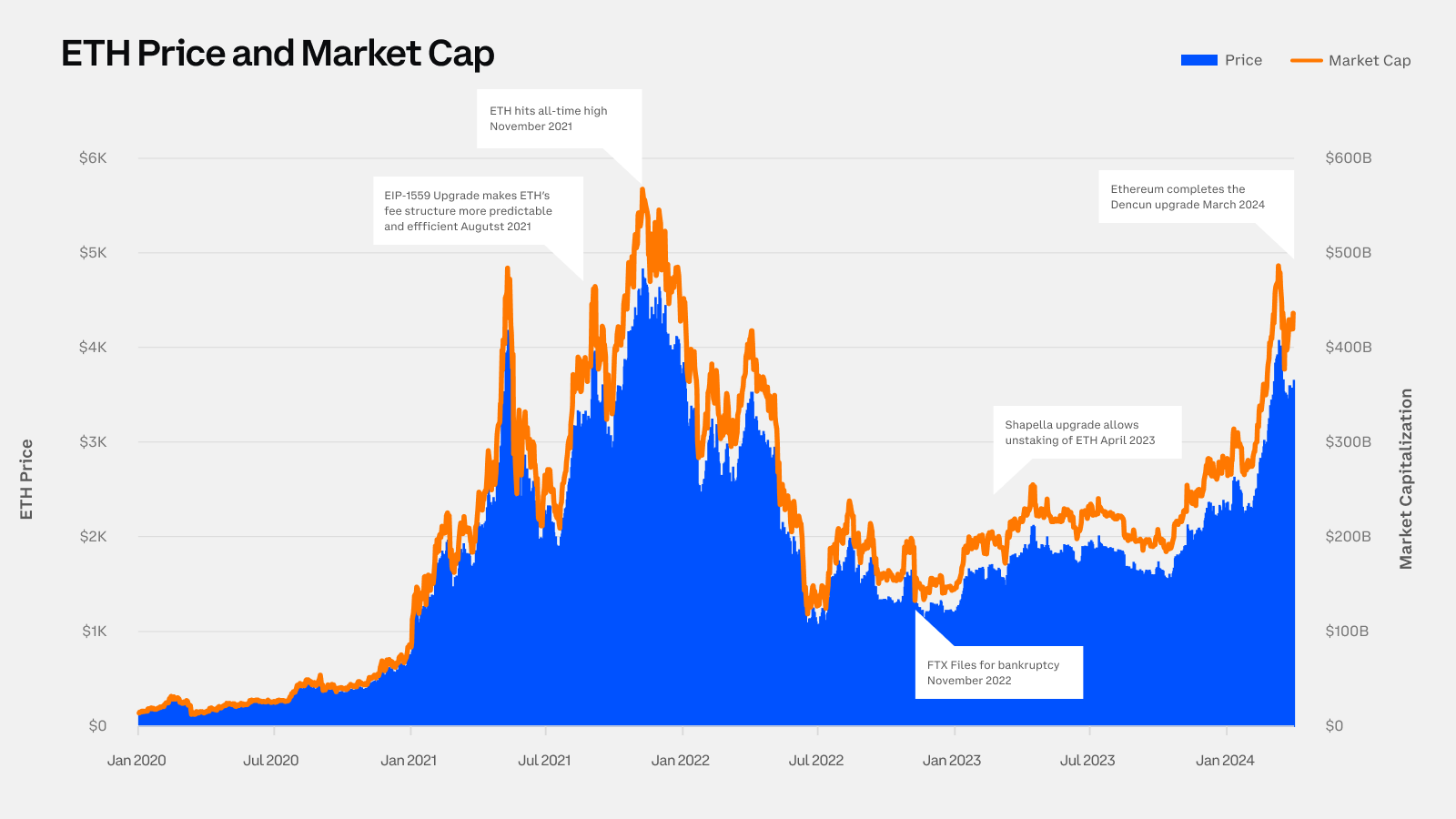
Dynamics of Ethereum Staking
Overview of Staking
In Ethereum's Proof-of-Stake (PoS) mechanism, staking involves locking up ETH tokens to support the blockchain's operation and security. Validators stake their ETH to propose new blocks or confirm transactions, and in return, they receive rewards in the form of newly issued ETH and transaction fees. This process secures the network and encourages participation by offering returns on staked assets. As covered on page 52 of Q2 Guide.
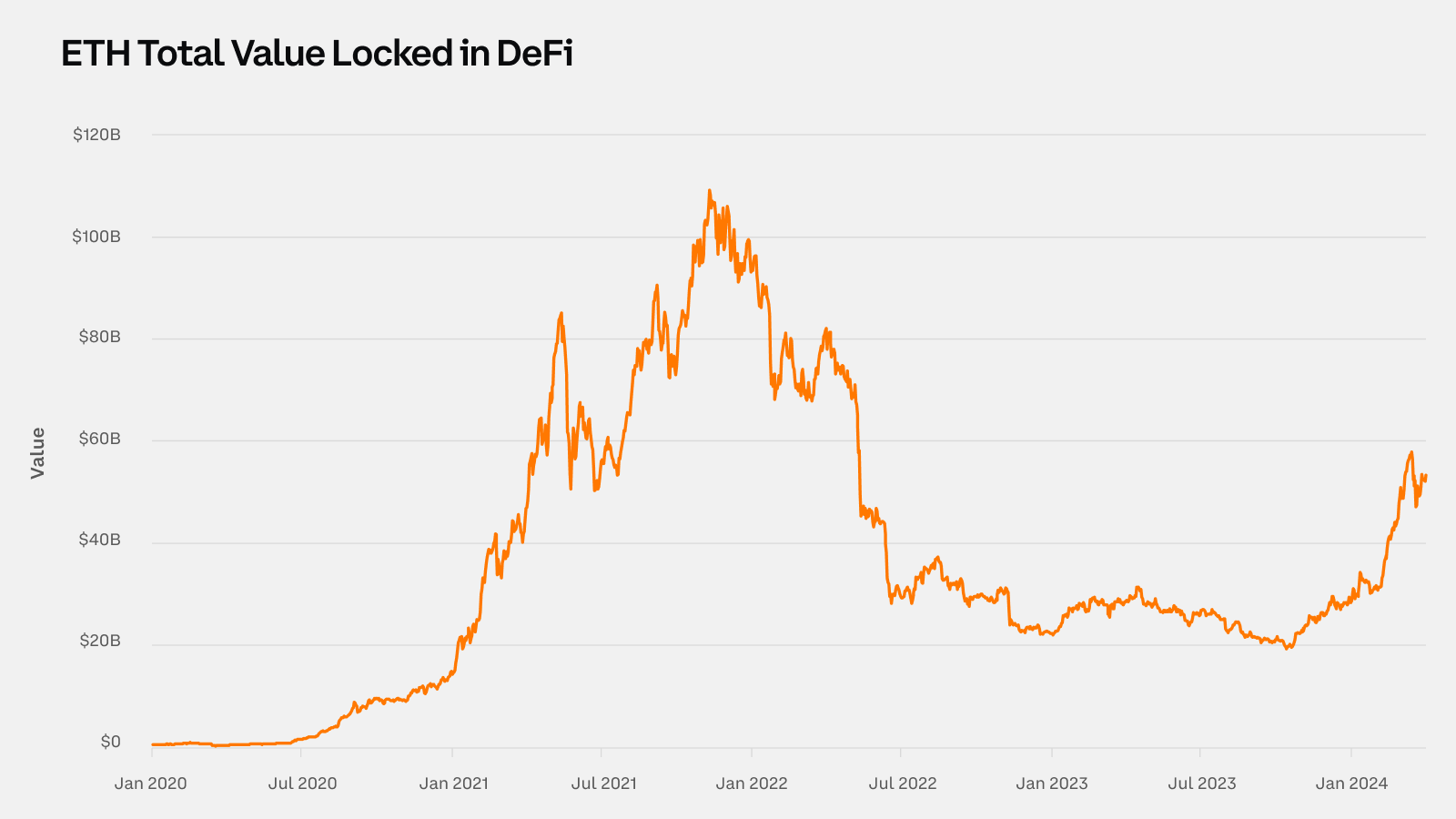
Growth in Staking
The staking landscape in Ethereum has evolved in the first quarter, with a 9% increase in staked ETH. This growth is driven by new developments like Maximal Extractable Value (MEV), Liquid Staking, Restaking, and Liquid Restaking. These innovations have introduced new incentives that encourage more staking activities, with the Eigenlayer Airdrop having been a factor that has particularly boosted Restaking and Liquid Restaking activities. Read more on page 51 of the report.

Stakeholders
The Ethereum staking ecosystem includes a wide range of participants, from individual investors to large institutions. Institutional stakers use these opportunities to earn yields on large ETH holdings. Liquid staking protocols like Lido and Rocket Pool are important because they offer tradable tokens that represent staked ETH, keeping liquidity available for stakers and making participation in Ethereum’s PoS even more attractive. Explore further details on page 46 of the report.

Ethereum's Derivatives Market and Open Interest
Rising Open Interest
Open interest represents the total number of unsettled derivative contracts, such as futures and options. The Ethereum derivatives market has seen a notable increase, with options open interest rising by 50% to new highs. This growth shows that traders and institutional investors are becoming more involved with Ethereum's financial products. If you'd like to deepen your understanding of this topic, pages 53-57 of the guide cover it in greater detail.

Market Maturity
The growth of Ethereum's derivatives market is evident in the advanced and varied trading strategies employed by traders. This progress has improved market depth and liquidity, allowing for more complex investment and hedging options. This maturity shows that Ethereum is becoming more widely accepted and integrated into traditional financial systems.
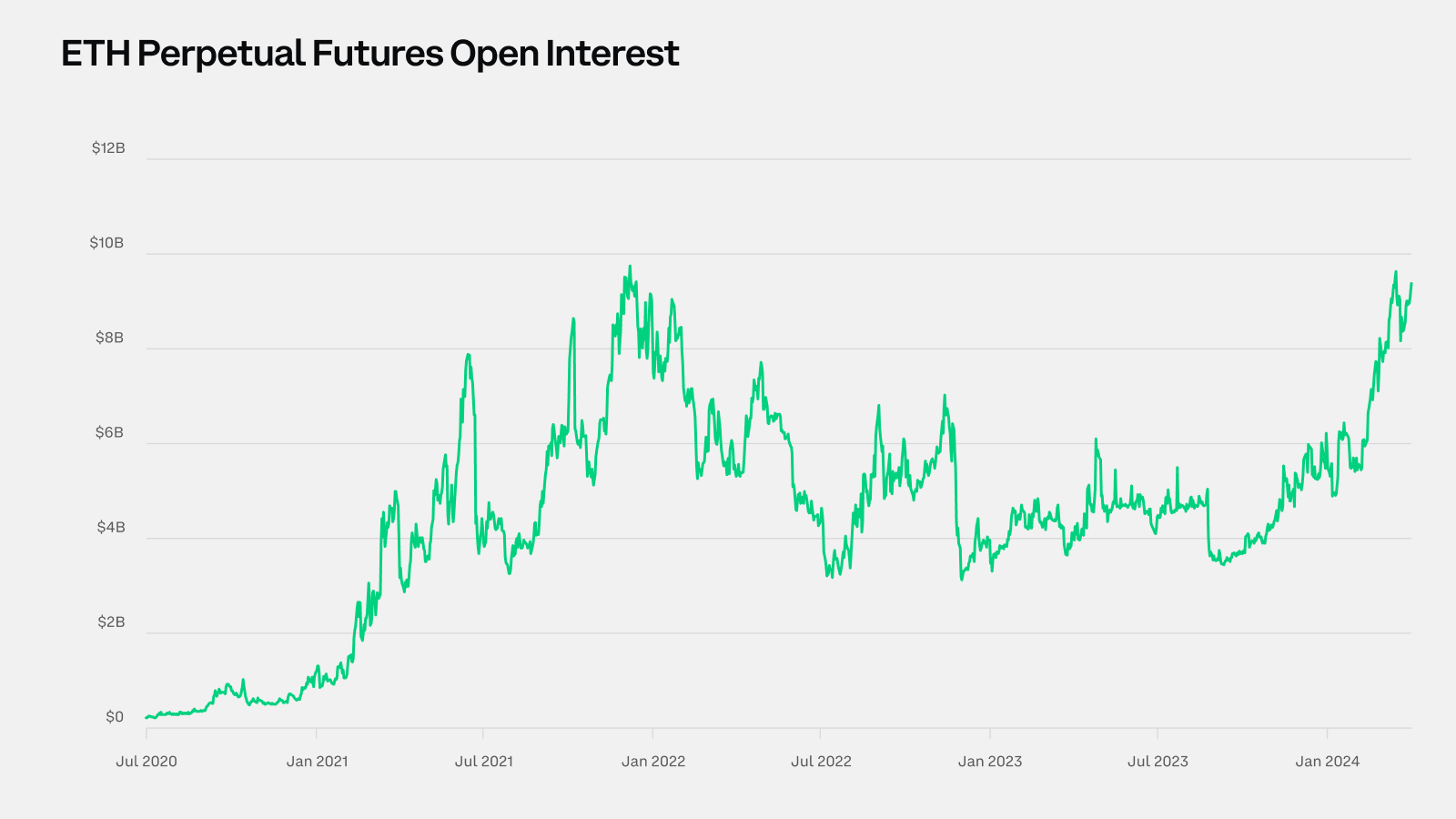
Drivers Behind the Spike
The rise in open interest during the first quarter is due to several connected factors. Mainly, Ethereum often follows Bitcoin's market trends. This link was clear as both Ethereum and Bitcoin derivatives markets responded to the excitement and speculation caused by developments in Bitcoin ETFs. The anticipation of these ETFs not only increased activity in Bitcoin’s market but also affected Ethereum, impacting its derivatives landscape.
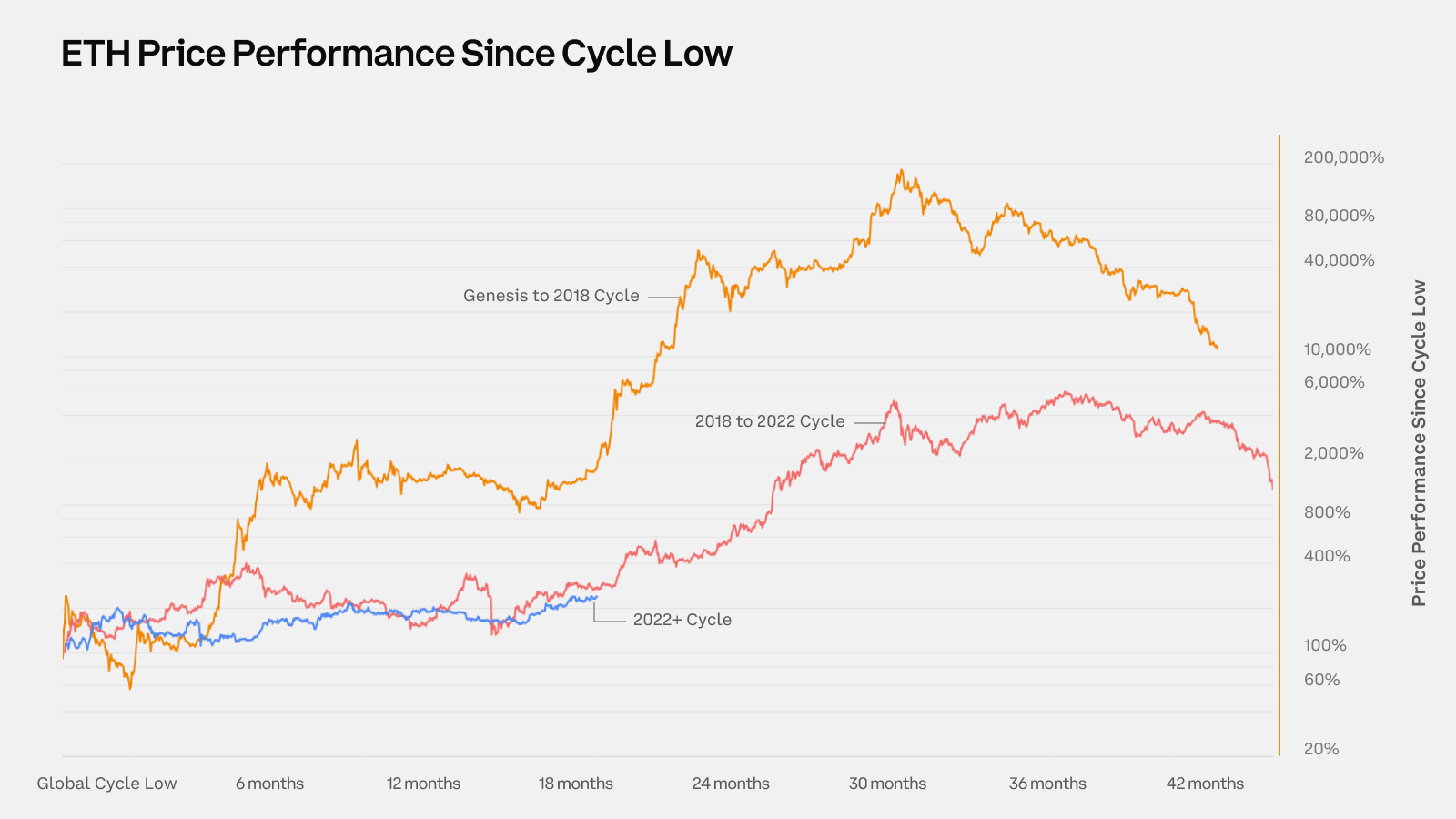
Conclusion
Overall, recent changes in Ethereum’s staking and derivatives markets, alongside the Dencun upgrade, show significant shifts in its ecosystem, impacting network functionality and investment dynamics. As Ethereum increasingly mirrors Bitcoin’s trends, investors need to fine-tune their strategies. Understanding the interplay between these upgrades and market changes is crucial for optimizing investment approaches, managing risk, and leveraging opportunities in Ethereum’s expanding role in the financial markets.
To get a better understanding of the digital asset market as a whole and learn more about key trends and events such as the halving, ETFs, and derivatives, download 'Q2 Guide to Crypto Markets' here.